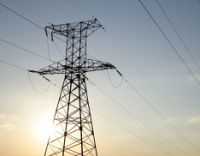

The Department for Business, Energy and Industrial Strategy (BEIS) and the UK Prime minister Boris Johnson have published a new strategy that aims to help Britain accelerate homegrown power for greater energy independence.
This plan aims to support other policy papers, including the Ten-point Plan for a Green Industrial Revolution as well as the Net Zero Strategy to help wean Britain off expensive fossil fuels and alleviate pressure from global factors that can influence the supply and price of energy in the UK.
This plan was put forward mainly to address the energy crisis that affected households following surging demand after the pandemic as well as the invasion of Ukraine, which lead to the UK government's decision to cut off the supply of Russian energy by the end of 2022 and introduce sanctions.
This policy paper aims to improve energy efficiency and roll-out renewable energy production, including offshore and onshore wind, as quickly as possible, while also focusing on domestic oil and gas exploration and production to support the industries that need it. It also proposes to revisit nuclear energy production in form of new "affordable" nuclear reactors, that will help achieve greener and secure energy, essential to deliver the government's net-zero plans and support the growing demand for electricity. In total, the government plans to build up to eight new nuclear reactors in the next decade.
The plan also promises to remain "open-minded" on shale gas production and consider any scientific updates on the technology and be ready to use it if the environmental and safety concerns are resolved, both on the ground and underneath.
Lastly, it sets out the plans to invest in the development of green hydrogen, which would be used as a replacement for natural gas in systems, as well as storage of excess energy, where the surplus of renewable energy could be used to produce green hydrogen, which can be stored for use later when the energy demand increases.
For more information on this subject, see: